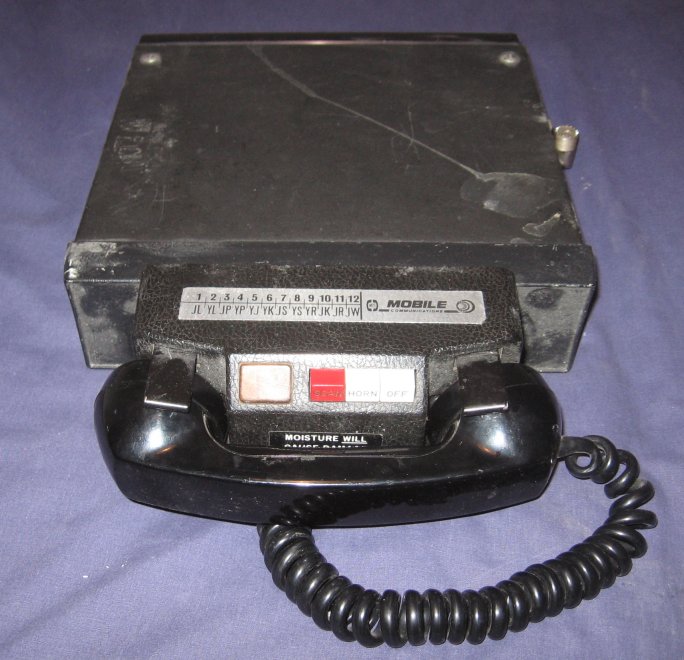Introduction
In this 21st century, all kinds of scientific and technological change over time, the phone is no exception. No one knew the phone will evolve to become like that. We all do know that
History
In 1908 a Professor Albert Jahnke and the Oakland Transcontinental
Figure 1 Wireless Phone Cases Dismissed
- In 1925, the company Zugtelephonie A. G.
- The Second World War made military use of radio telephony (Figure 2) links. Handheld radio transceivers have been available since the 1940s. Mobile telephones for automobiles became available from some telephone companies in the 1940s.
Figure 2: Radio Telephony
-Bell Labs introduced cellular-like technology for police communications in the 1947 years.
-1956 Sweden
The Metropolitan Transit Authority (MTA) system was the first system an automated switching network for vehicle. The system's technology consisted of rotary dial equipment. The phones could also be paged. To receive incoming calls, an operator would first have to figure out where the car was located. Little information is available about the MTA generation, and it only had a handful of subscribers.
-In 1973, April. Martin Cooper (Figure 3), executive from Motorola made the first call from a mobile. He did it at the Sixth Avenue, New York, and was addressed to his major rival in the sector, Joel Engel from Bell Labs, AT&T
Figure 3: Martin Cooper
-In 1982 Bell Laboratories in the United States created the device now known as the first generation mobile phone (1G, analog voice)
-In 1986, the Federal Communications or FCC granted the frequency range of 47-49 MHz for cordless phones. Granting a greater frequency range allowed cordless phones to have less interference and need less power to run.
-Second generation phones (2G) (Figure 3) appeared in 1990. They were smaller, lighter and cheaper, and based on GSM (Global System for Mobile Communications) providing digital cellular communication, which improved the quality and security of voice transmission.
Figure 3 Second generation 2G
-In 1994, digital cordless phones and in 1995, digital spread spectrum (DSS) were both respectively introduced. Both developments were intended to increase the security of cordless phones and decrease unwanted eavesdropping by enabling the phone conversation to be digitally spread out.
-In 1998, the FCC granted the frequency range of 2.4 GHz for cordless phones and as of 2003 the upward range is now 5.8 gigahertz (Bellis, 2015)
Social Impact
The mobile phone device is a very important communication tool as it was built to enhance social contacts and network while enhancing business productivity. With our mobile phones, we are able to update ourselves on where our families and friends are. We are able to know what is happening around us. The mobile phone enables us to be on time during appointments. It also helps in verifying the degree of temperature to enable us chose appropriate dress code for the day. It keeps us informed on current events because of its connection to the internet. It relaxes it also when we play games with it or listen to music through it. (Social Impact of mobile Phone device, 2012)
Conclusion
The phone is a lot of human most important invention as it has hugely changed the way of our contact but also increase our life pleasure. The phone might have helped us improve our life a lot, but at some point it will let worry about the effects of radiation and there is still improvement needed to be done.
Reference list
San Francisco Call. (2013). Retrieved from http://cdnc.ucr.edu/cgi-bin/cdnc?a=d&d=SFC19080707.2.68#
Lauren Collins, S. R. (2015). Mobile Devices: Tools
and Technologies. CRC Press.
History.
(n.d.). Retrieved f rom The Age of Mobile Phone:
https://sites.google.com/a/scarletmail.rutgers.edu/the-age-of-mobile-phone/
Bellis, M. (2015). History of the Telephone -
Modern Phones. Retrieved from About money:
http://inventors.about.com/od/bstartinventors/a/telephone_3.htm
Cerdeño, E. (2013). Phone evolution and revolution.
Retrieved from Phone evolution and revolution:
http://www.mapfre.com/mapfrere/docs/html/revistas/trebol/n65/pdf/Articulo2-en.pdf
Social Impact of mobile Phone device. (2 january, 2012). Retri eved from AFROEURO:
http://afroeuro.org/magazine/?p=4722




